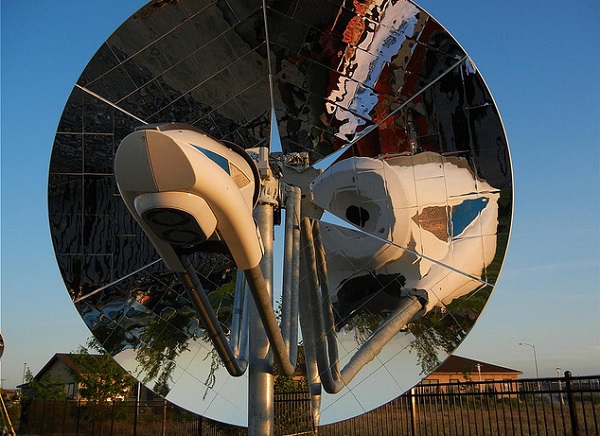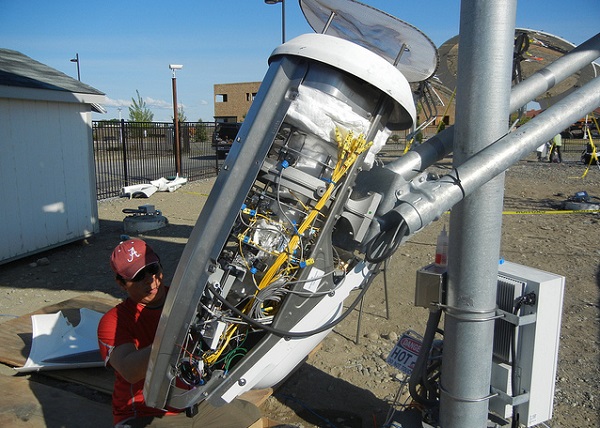Clean energy purists might not like the idea of making any concession to fossil fuel use, but if you believe incremental progress is good, a technology that uses solar power to boost the efficiency of natural gas power plants at least qualifies as intriguing. And really, in the end, it’s just a way to store solar energy.
The system we’re talking about, from scientists at the U.S. Department of Energy’s Pacific Northwest National Laboratory, uses concentrated sunlight, working in concert with a catalyst, to turn natural gas into syngas, which contains hydrogen and carbon monoxide and has higher energy content than natural gas. So that’s how energy from the sun is essentially stored: by boosting the power production potential of a given amount of natural gas.

“Our system will enable power plants to use less natural gas to produce the same amount of electricity they already make,” PNNL engineer Bob Wegeng, the lead on the project, said in a statement. “At the same time, the system lowers a power plant’s greenhouse gas emissions at a cost that’s competitive with traditional fossil fuel power.”
The researchers know the concept can work but getting it to the point where it’s efficient and economical enough to be viable is the challenge. When the DOE funded this “integrated solar thermochemical reaction system” with up to $3.5 million through the SunShot program, it laid out three goals:
- Improve the performance of the solar thermochemical reaction system, increasing the solar-to-chemical energy conversion efficiency from 63% to about 75% and increasing the solar thermochemical augment from about 20% to as much as 28%
- Establish the design and manufacturing methods that enable solar power generation at a levelized cost of electricity of no more than $0.06 per kilowatt-hour by 2020
- Set a validated baseline for capital costs of solar thermochemical systems.

The PNNL system begins with a parabolic dish. It focuses sunlight on a four-foot by two-foot device that contains chemical reactor and several heat exchangers. PNNL explains how things work from there:
The reactor has narrow channels that are as wide as six dimes stacked on top of each other. Concentrated sunlight heats up the natural gas flowing through the reactor’s channels, which hold a catalyst that helps turn natural gas into syngas.
The heat exchanger features narrower channels that are a couple times thicker than a strand of human hair. The exchanger’s channels help recycle heat left over from the chemical reaction gas. By reusing the heat, solar energy is used more efficiently to convert natural gas into syngas. Tests on an earlier prototype of the device showed more than 60 percent of the solar energy that hit the system’s mirrored dish was converted into chemical energy contained in the syngas.
What remains to be seen, apparently, is if this efficiency can be ratcheted up to the 75 percent goal, and if the augmentation provided by the solar can increase to 28 percent. We’ll see, but it sounds like one worth watching.